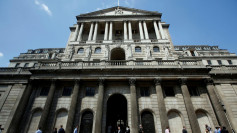The key indicator for consumer prices in the US had dropped by a record amount for the month of April. The record dip in the index was attributed to the sudden collapse in travel and consumer goods spending over the past couple of months as the coronavirus pandemic forced governments to impose restrictions and shelter-in-place orders.
Data published by the Labor Department on Tuesday showed that the country's core consumer price index (CPI), excluding food and fuel costs, dipped by about 0.4 percent. This was a much larger dip than the 0.1 percent decrease in March. According to the agency, the drop was the most ever recorded since 1957 and a stark contrast to the 1.4 percent increase recorded over the same month last year.
Compared to March, the decline in the country's overall CPI declined by about 0.8 percent, the most ever recorded since December 2008. The decline comes as gas prices in the country continued to plunge by 20.6 percent during the same month. The department's data further revealed that annual consumer inflation slowed to 0.3 percent, the smallest gain since 2015.
While the overall CPI did decline, costs for essential items such as food surged by 2.6 percent in April compared to the previous month. The surge in food prices is the most monthly increase ever recorded since 1974. Prices for items such as bread, meats, drinks, and snacks all posted record increases as more Americans stock up amid the ongoing threat of a second wave of the coronavirus.
Meanwhile, prices for clothing, insurance, hotels, airfares, and luxury items posted record monthly declines over the past months, contributed to the record decline of the CPI. Prices of services and labor, which make up around 63 percent of the CPI, also dropped by a record 63 percent during April, its biggest decline since the end of 1982.
The figures found in the report have raised concerns over possible deflation and the prolonged recovery of the economy after the pandemic is over. The concerns expressed over the figures are valid given that the Federal Reserve and other agencies do use the index to gauge underlying price trends.
Economists at the Washington Center for Equitable Growth have stated that the figures reported are alarming as it could indicate a potential deflationary spiral. However, other economists have a much more optimistic take on the data, stating that the price declines may only be temporary and a one-off due to the pandemic.
Amherst Pierpont Securities LLC chief economist Stephen Stanley noted that the price drops will likely not be sustained beyond the lifting of the lockdowns and shut down orders. After economic activity picks up in the latter part of the year, prices are likely to recover to previous levels, he added.






